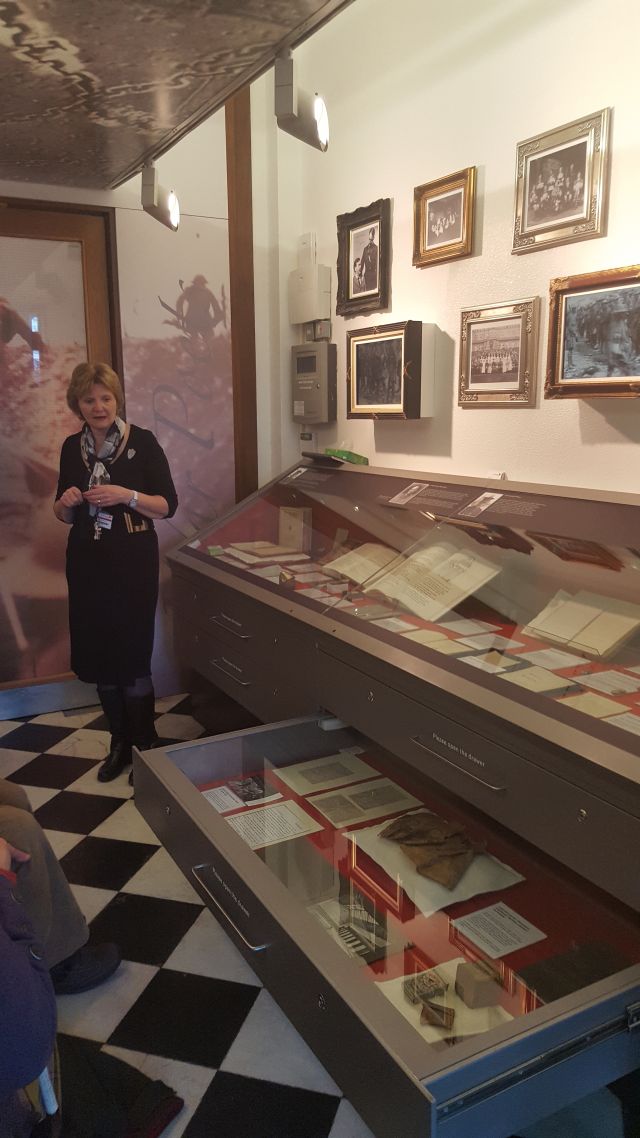Reopened on 1 November following a major refurbishment, the War Poets Collection has become more rounded so that it tells the story not only of Siegfried Sassoon and Wilfred Owen but also of the entire history of the Craiglockhart site which in mid Victorian times had been owned by the second and third generation of Monros, anatomy professors at Edinburgh University. Developed as a Hydropathic Hotel and Spa that opened in 1880, it soon fell into financial difficulty until relaunched by entrepreneur James Bell, with the Carmichael family giving continuity by providing gardeners for over fifty years.
Since 1988 over 650 items have been acquired that tell the story of its requisitioning as a War Hospital and the regime under which injured officers received medical attention there. Arriving with genuine shellshock, Wilfred Owen called Craiglockhart an “excellent concentration camp”, but hailed the company that he found there as providing “my free and easy Oxford” : he taught at Tynecastle, learned German and edited the Hospital’s journal The Hydra. By contrast Siegfried Sassoon was delivered into its care as a protesting hero, and spent his time playing golf and writing poems in what he called “my counterattack notebook”. Declaring that “many of us who came here slightly ill are now becoming dangerously well”, Owen returned to the Western Front where he was killed just a week before the end of the War, whereas Sassoon fulfilled his potential as a novelist, dying in 1967.

In 2014, a rare fungus, Clavulinopsis cinereoides, was discovered in Scotland for the first time growing on the lawn at Craiglockhart. For further information on this exciting find see: http://stv.tv/news/east-central/260067-new-fungus-brought-to-craiglockhart-military-hospital-by-soldiers/
The Senior Psychologist at Craiglockhart War Hospital was the celebrated Dr William Halse Rivers Rivers. His uncle, James Hunt, had written an important work about the treatment of stammering – could this explain Dr River’s unusual double surname? After the war the building did not revert to a Hydropathic but was instead acquired by Catholic sisters to become a teacher training college, in which role it served for 64 years until being acquired by Edinburgh Napier University which officially opened there in 1987. Now the poems of Owen and Sassoon have been recorded by “Regeneration” author Pat Barker, Sir Daniel Day-Lewis, Nathaniel Parker, Alan Little and Ian McMillan, and are accompanied by the Wilfred Owen Violin which, made from the branch of a sycamore growing in the grounds, has been dedicated as an instrument of peace.